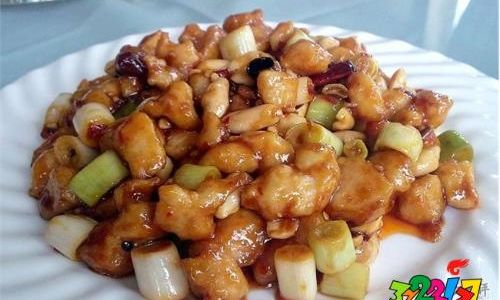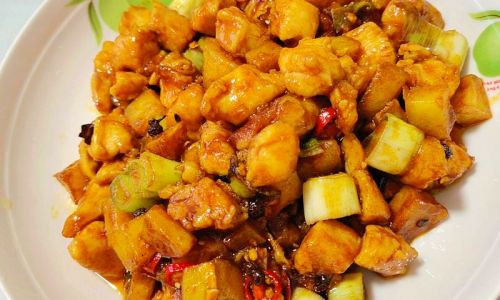Table of content
Stir-frying is a cornerstone of Asian cuisine, renowned for its ability to transform simple ingredients into vibrant, flavorful dishes within minutes. Among the most beloved stir-fried creations is marinated chicken cubes—a versatile protein that pairs beautifully with vegetables, rice, or noodles. While the process may seem straightforward, achieving perfectly tender, golden-brown chicken with a caramelized exterior and juicy interior requires precision, technique, and an understanding of the science behind high-heat cooking. This guide delves into the intricacies of stir-frying marinated chicken cubes, from prepping your ingredients to executing flawless wok hei (the breath of the wok).
The Importance of Marination
Before even lighting the stove, marination is the unsung hero of exceptional stir-fried chicken. A well-crafted marinade not only infuses the meat with flavor but also tenderizes it, ensuring a melt-in-your-mouth texture. Key components of an effective marinade include:

- Acidic Elements: Ingredients like soy sauce, rice vinegar, or citrus juice help break down tough muscle fibers.
- Aromatics: Fresh garlic, ginger, or scallions add depth.
- Seasonings: Salt, sugar, and spices balance the flavors.
- Thickeners: Cornstarch or baking powder create a protective coating, sealing in juices during cooking.
For optimal results, marinate the chicken for at least 15–30 minutes. Over-marinating, however, can cause the meat to become mushy, so adhere to recommended timings.
Essential Tools and Ingredients
To achieve wok-quality results at home, gather the following:
- Wok or Skillet: A carbon-steel wok is ideal for its ability to withstand high heat and distribute it evenly. A large cast-iron skillet is a suitable alternative.
- Sharp Knife: For uniform chicken cubing (1-inch pieces work best for even cooking).
- High-Smoke-Point Oil: Peanut, canola, or avocado oil prevents burning at high temperatures.
- Protein: Boneless, skinless chicken thighs are preferable for their fat content, which keeps the meat moist. Breast meat can be used but requires careful monitoring to avoid dryness.
- Aromatics and Vegetables: Onions, bell peppers, carrots, and snow peas add texture and freshness.
- Sauces: Oyster sauce, hoisin, or chili paste elevate the dish’s complexity.
Step-by-Step Stir-Frying Process
Preheat Your Wok
Heating the wok properly is non-negotiable. Place it over high heat for 2–3 minutes until a drop of water evaporates instantly. Add 1–2 tablespoons of oil and swirl to coat the surface. This creates a non-stick layer and prevents the chicken from steaming.
Sear the Chicken in Batches
Overcrowding the wok lowers the temperature, leading to steaming rather than searing. Cook the chicken in a single layer, allowing each piece to develop a golden crust. Flip after 2–3 minutes, then transfer to a plate. Repeat with remaining chicken.
Stir-Fry Aromatics
Reduce the heat to medium and add minced garlic, ginger, and sliced chili (if using). Sauté for 30 seconds until fragrant but not browned.
Introduce Vegetables
Add heartier vegetables first (e.g., carrots, onions), stir-frying for 2 minutes. Softer vegetables (bell peppers, snap peas) follow, cooking for an additional minute. The goal is to retain crispness.
Reunite Chicken and Vegetables
Return the chicken to the wok. Toss gently to combine, ensuring the meat is nestled among the vegetables for even heat distribution.

Add Sauce and Finish
Pour in your pre-mixed sauce (soy sauce, oyster sauce, a pinch of sugar, and a splash of broth or water). Stir vigorously to coat everything evenly. The sauce should thicken within 1–2 minutes due to the cornstarch in the marinade.
Final Touches
Remove from heat immediately to prevent overcooking. Garnish with sesame seeds, chopped cilantro, or sliced scallions.
Pro Tips for Perfect Stir-Fries
- Mise en Place: Prep all ingredients before heating the wok. Stir-frying moves quickly, leaving no room for last-minute chopping.
- High Heat, Quick Hands: Maintain a rolling boil in the wok. Use a spatula to keep the ingredients in constant motion.
- Taste and Adjust: Season with a pinch of white pepper or a drizzle of sesame oil just before serving.
- Resting Time: Let the chicken rest for 2–3 minutes post-cooking to redistribute juices.
Common Mistakes to Avoid
- Cold Wok Syndrome: Adding oil to a lukewarm wok results in greasy, soggy chicken.
- Overcrowding: Steam is the enemy of crispy edges. Cook in batches if necessary.
- Underseasoning: Marination is key, but a final splash of soy sauce can brighten flavors.
- Overcooking Vegetables: Aim for al dente texture to preserve nutrients and crunch.
Regional Variations and Customizations
- Szechuan-Style: Add doubanjiang (chili bean paste) and Szechuan peppercorns for a numbing heat.
- Cantonese-Inspired: Incorporate Shaoxing wine and a dash of sesame oil for subtle sweetness.
- Gluten-Free Option: Substitute soy sauce with tamari and use rice flour instead of wheat-based cornstarch.
- Low-Sodium Version: Reduce soy sauce and amplify flavor with fresh herbs and citrus zest.
Serving Suggestions
Stir-fried chicken cubes shine when paired with:
- Steamed Jasmine Rice: A neutral base that absorbs the sauce beautifully.
- Chow Mein Noodles: Toss with the stir-fry for a one-pan meal.
- Lettuce Wraps: For a refreshing, low-carb option.
- Fried Rice: Use leftovers to create a second meal.
The Science Behind Stir-Frying
Stir-frying at temperatures exceeding 350°F (175°C) triggers the Maillard reaction—a chemical process that browns proteins and carbohydrates, creating complex flavors. The rapid cooking also preserves nutrients, making stir-fries both delicious and healthful.
Troubleshooting Guide
- Soggy Chicken: Increase heat or cook in smaller batches.
- Burnt Aromatics: Reduce heat when sautéing garlic and ginger.
- Bland Flavor: Enhance with a splash of vinegar or a sprinkle of MSG (monosodium glutamate) for umami.
Conclusion
Stir-frying marinated chicken cubes is a dance of heat, timing, and intuition. While the technique may demand practice, the rewards—tender meat, crisp vegetables, and a glossy sauce—are well worth the effort. Whether you’re a novice cook or a seasoned home chef, mastering this dish opens doors to endless culinary creativity. Experiment with marinades, embrace the sizzle of the wok, and savor the satisfaction of a meal cooked with precision and passion.
Word Count: 1,420





0 comments